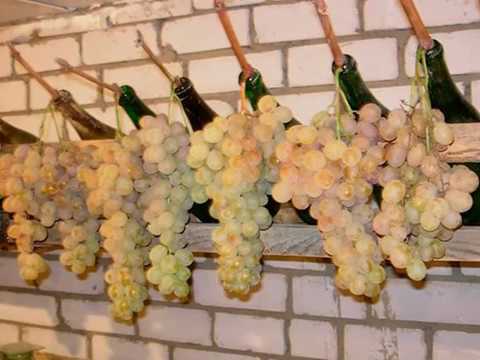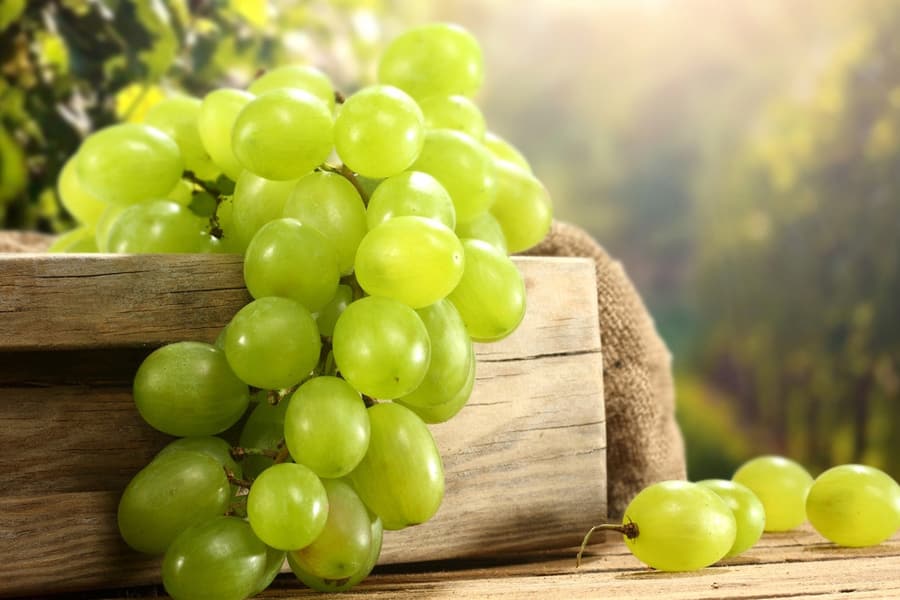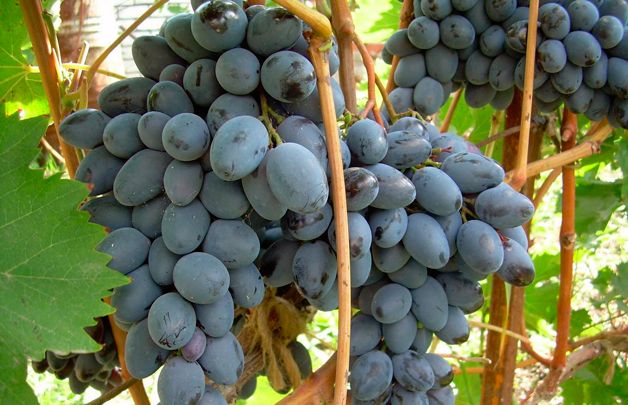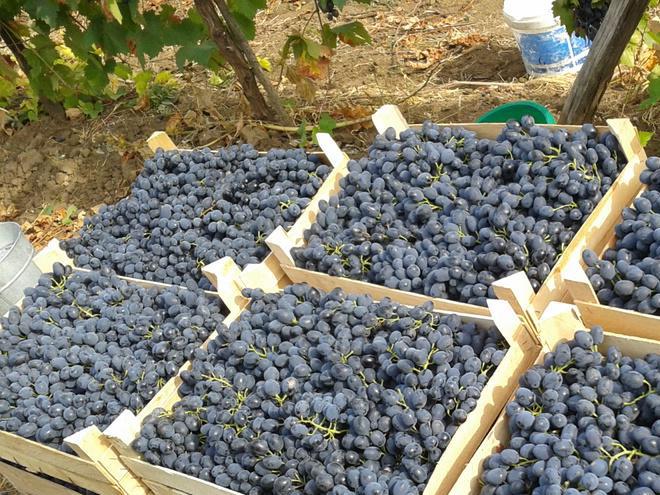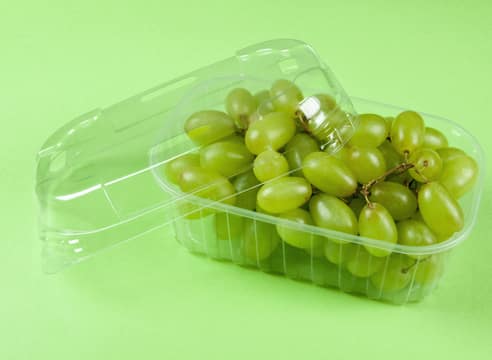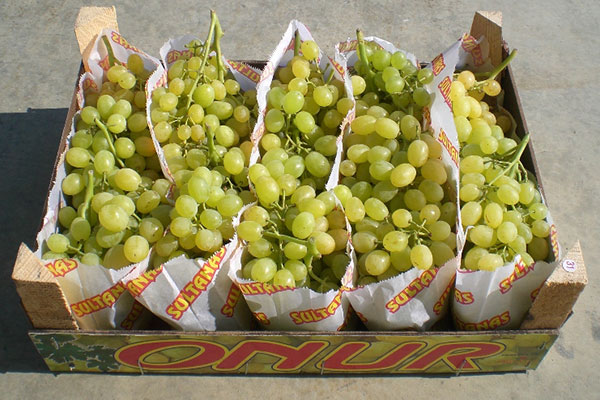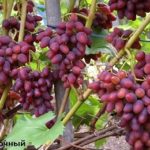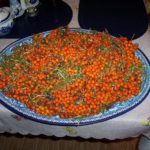Grapes have beneficial properties for the human body and a pleasant taste. I want to keep them fresh for as long as possible so that during the cold season I can replenish my supply of vitamins. Not just any variety is suitable for such purposes, and the process itself has many features and tricks. How to properly store grapes so that they do not lose their product and taste characteristics over a long period of time?
Grape varieties for long-term storage
The density of grape fruits, the degree of their ripening, and the level of sugars contained in them greatly influence the duration of successful storage. To plant for the winter, experienced winegrowers advise using varieties with medium or late ripening, the fruits of which are dark in color and covered with a thin layer of prune.
It is this substance that protects grapes from excessive evaporation of moisture, pest damage and mechanical damage. For storing for long-term storage, moderately ripe, loose brushes are selected. The bulbs must be firmly attached to the stalks and free from damage and signs of disease. The higher the sugar content of the grapes, the longer it will be able to retain its characteristics.
For winter storage, professionals recommend the following varieties:
- Moldova;
- In memory of Negrul;
- Cinsault;
- Moldavian Black;
- Muscat of Alexandria;
- Alden.
Bunches of grapes of these varieties are not prone to fungal diseases, retain their wonderful smell and taste characteristics for up to six months, and also do not change their original color for a long time. Also, these varieties are suitable for transportation over long distances.
Tips for growing and harvesting grapes
Long periods for successful storage of grapes are not guaranteed only by a successful choice of variety. To achieve maximum results, it is necessary to strictly follow the conditions of agricultural technology and adhere to the recommended rules for harvesting fruits. Constant and strong moisture at the end of the growing season does not have the best effect on the preservation of fruits, therefore 1.5 months before the planned harvest of the ripe crop, watering the plants is stopped completely.This will make it possible to increase the amount of sugars and reduce the amount of excess liquid.
To increase the shelf life of the crop, about 25% of all bunches are deliberately removed in advance. If this procedure is not carried out, the grapes will begin to crumble, become lethargic and unsuitable for long-term storage. Correctly and timely application of fertilizing also affects the safety of the collected brushes.
It is better to fertilize vineyards with phosphorus-potassium fertilizers, since the introduction of organic or mineral components with a high nitrogen content will not bring the expected benefit.
It is necessary to implement preventive measures for grapes against fungal diseases in a timely manner, since affected bunches should under no circumstances be sent for long-term storage. Bunches of ripe grapes should be harvested on a dry and sunny day. After cutting from the bush, the tassels are quickly hidden in the shade. Work should not be carried out early in the morning or in the evening, since heavy dew falls at this time.
If you plan to store the grapes in a hanging position, then the bunches should be trimmed with a small piece of the vine up to 9 cm long. Only the tassels with the stalk are placed in boxes. When cutting clusters with fruits, you must not damage the wax coating on them, so it is advisable to wear gloves when carrying out work and try to touch the fruits with your hands as little as possible.
Storing grapes for the winter at home
At home, preserving grape bunches until the coldest weather is not so easy. It is required not only to grow and correctly collect high-quality preparations, but also to carry out a number of preparatory measures. First of all, a thorough inspection of the bunches is carried out, and berries that show signs of spoilage or are simply dry are removed using tweezers.In order not to shorten the shelf life of grapes, they should never be washed before storing.
Storage for the winter is prepared in advance, since the fruits are capricious and require special conditions. If the house has a good basement, then the humidity inside it should not exceed the recommended parameters. Otherwise, grapes cannot be sent there. Good ventilation is provided in the storage; sometimes it is necessary to organize ventilation to prevent increased dampness and the appearance of fungus.
If in winter the temperature drops to negative levels, then additional insulation will need to be organized, because in order to preserve the grape fruits, the regime should be maintained from +1 to +8 0C. This temperature ensures maximum preservation of the fruit.
When this indicator increases, the fruits quickly lose their moisture reserves and begin to dry out. Humidity is recommended to be maintained at 80%. If this indicator exceeds the recommended value, then it would be a good idea to place a bucket filled with sawdust, charcoal or quicklime in the corner.
To prevent the formation of mold, the walls of the grape storage facility are whitewashed with a solution of quicklime. To prevent the appearance of pests, the premises are fumigated with sulfur. All work must be carried out a month before the planned harvest, otherwise the grapes may be poisoned by chemicals. It is not recommended to place the harvest near products with a sharp and strong odor or vegetables that release excess moisture.
If the harvest is small, then it can be stored until winter in jars filled with clean water.
For this technique, the tassels are cut along with a branch of the vine, the larger end of which is dipped into a bottle of water, fixed at a certain angle so that the bunch can hang freely. To prevent putrefactive processes from starting in the water, one tablet of acetylsalicylic acid or activated carbon is thrown into it. In order for the vine to better absorb microelements and nutrients from the water, a new cut is periodically made on it. If the above recommendations are followed, the grapes can be stored for at least a couple of months.
The harvested crop can be stored in a large spacious room on a wire. To do this, twist the ponytails with twine and tie the tassels in pairs. After this, the grapes are hung on a tightly stretched wire, thick twine or pole. To prevent the grape clusters from touching while suspended, the height of their attachment should not be the same.
Aesthetic appearance and original taste are preserved for about 3 months, but exactly how long this period will be depends on the temperature indicators and the established humidity in the storage. It is recommended to lay cellophane or burlap under the grapes so as not to trample the falling fruits. If this is not done, then there is a high risk of vinegar fly appearing, which spreads bacteria to a healthy crop.
To store grapes, boxes are also used, the bottom of which is previously covered with sawdust.
The layer thickness should be at least 2 cm. Folded tassels should not touch neighboring ones. The container is filled to the top, alternating layers of grapes and sawdust. Sawdust is poured on top and a lid is placed. You should not cover the box tightly so that the air exchange processes are not disrupted.It is not recommended to use sawdust from coniferous trees in this case, because they negatively affect the taste characteristics of the grapes. If possible, replace sawdust with cork powder.
You can build wooden racks for storing grape bunches, the depth of which will be about 75 cm, so that it is convenient to inspect and remove the brushes. The distance between the shelves is left within 30 cm. The bottom is lined with straw ash, which will serve as an additional antiseptic and help protect the crop from common diseases and pests. The grapes are folded in one layer, with the ridges facing away from you. This procedure makes further inspection of the hands more convenient.
Can it be stored in the refrigerator?
Storing grapes indoors (cellars, glazed outbuildings, balconies) does not always give a positive result, especially if the berries need to be stored for a long time. This is explained by the fact that in the current conditions it is very difficult to maintain temperature and humidity at a constant level, as well as to fight pests and pathogens.
In the case when the harvest is small, there is a real opportunity to store it in the refrigerator, where it is quite easy to provide the best storage conditions. Industrial refrigeration units allow you to regulate not only the temperature, but also the gas environment. At home, it is enough to organize the temperature regime at 0…+2 0C, and maintain humidity at least 90%. If these parameters are observed, fresh fruits can be stored for up to six months.
Before sending them to the refrigerator, grapes should never be washed or wrapped in cellophane.The brushes are folded up with combs, preventing them from touching each other. Fruits can also be placed in the freezer. It is believed that dark grape varieties retain their quality better than light ones when fresh; any variety you like is suitable for freezing.
Repeated exposure of fruits to low temperatures should not be allowed.
Before putting them in the freezer, wash the brushes, let them dry, carefully sort the berries and place them on a tray. All this is sent to the refrigerator for a couple of hours, then to the freezer for half an hour. The grapes are taken out, packaged in bags or containers and immediately sent back to the freezer.
The temperature there remains at -24 0C. If you need to defrost the berries, they are placed in water heated to room temperature for an hour and immediately eaten. Also, to defrost, place the product overnight on the bottom shelf of the refrigerator, as a result of which the whole process will proceed more slowly and the taste will be better.
General tips for storing grapes
Long-term storage of grapes leads to evaporation of moisture and drying of the berries, as a result of which they become less sweet and tasty. You can get out of this situation if for 10 seconds. dip the fruits in sugar syrup (20%), then immediately transfer them to ice water and wait until they cool completely.
If the temperature in the room tends to rise, then in order to preserve the grapes longer, you will need to frequently inspect them and remove damaged fruits. It is recommended to increase and decrease the temperature in the storage using vents. When this indicator approaches a negative mark, it is necessary to organize warming up.
When storing the harvested grapes on shelves, they are inspected by carefully lifting them by the tail. Those brushes that are suspended on ropes or a vessel with water should not be touched with hands. When inspecting bunches stored in boxes, it is correct to place them in a clean container. If the owner is sure that the recommended storage conditions are observed in the storage facility, then it is better to limit himself to a superficial inspection and not disturb the delicate grapes.
If mold is detected in the room, they immediately organize thorough ventilation and fumigate the basement with sulfur. We must remember that grapes cannot be stored in the light, as they may lose their taste and unique aroma.

